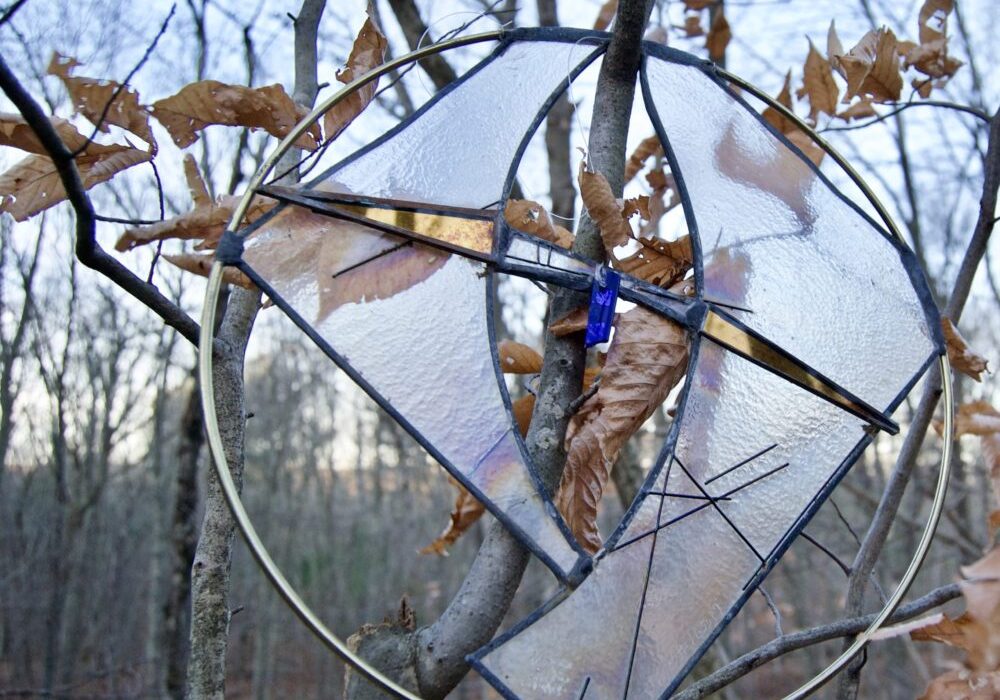At a nature-themed holiday craft fair that I accidentally wander into, a cashier admits that she is not much into whimsy, but she can’t help but enjoy the photographs by one of their featured artists. There is such a thing as too much frivolity, yet there are those who get it just right.
This is what I see on the land bordering Ashford and Willington.
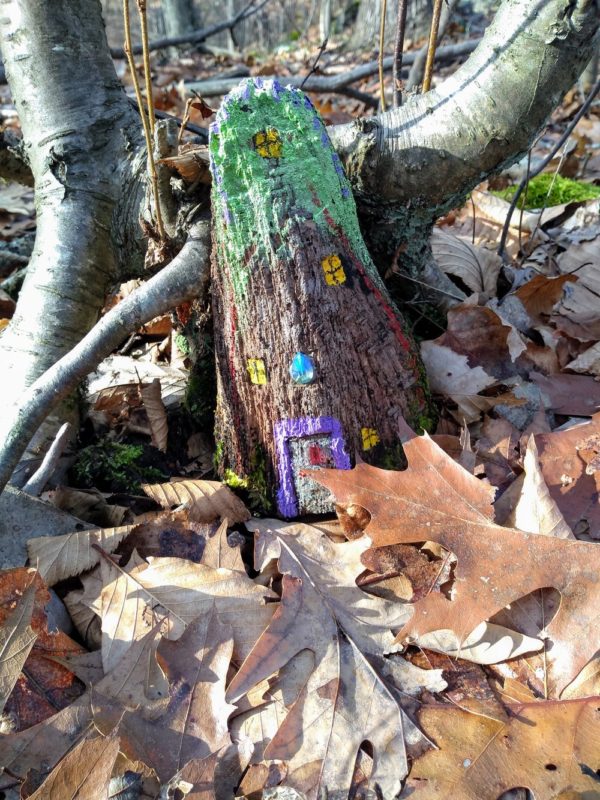
A neighbor to this park, preserve, sanctuary, and trail has created fairy houses, sereptiously installed in tree hollows in the vicinity of Fenton-Ruby Park and Wildlife Preserve. Handwritten instructions for finding the homes are posted on a tree at an elementary school child’s eye level. Beaded creations dangle from branches above the dozen cottages that inspire imaginative play among the young children walking ahead of me. This fantastic world carries them for the next few miles of walking, postponing the inevitable exhaustion-fueled meltdown by an hour or more. A little paint on broken chunks of wood turns out to be genius.
Just off the path — which is not loudly labeled and mostly functions as an even less improved extension of a dirt road — is a glass ornament.
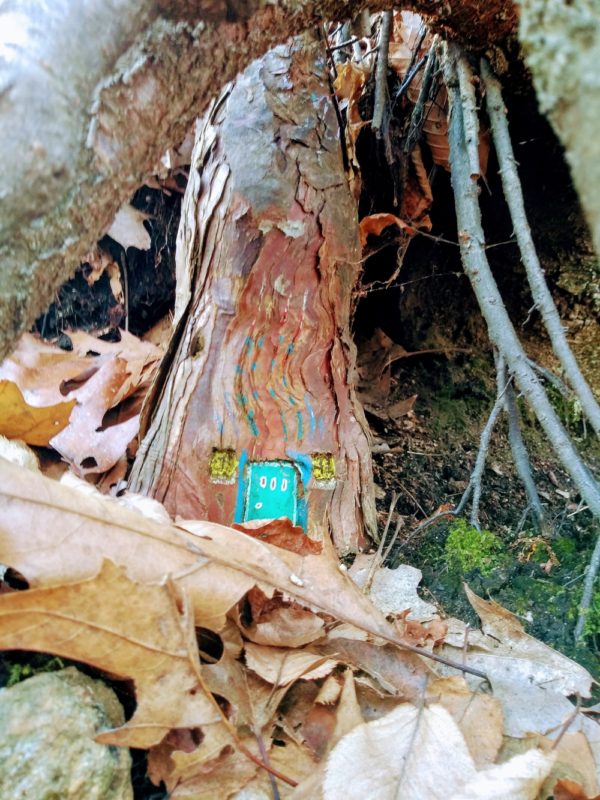
The woods are full of surprises. On the 1.2 mile Langhammer Trail — accessed from Ashford’s Old Connecticut Path or a connector from Willington’s Fenton-Ruby Park and Wildlife Preserve — you will find a number of balanced stones, a few levels up from the standard cairns.
The boundaries between towns, and often, properties, are invisible. They are often, also, without consequence. This trail, combined with the Fenton-Ruby Park and Wildlife Preserve, and the Drobney Sanctuary, combine to form nearly 400 acres of unfragmented forest. For Connecticut, that’s something.
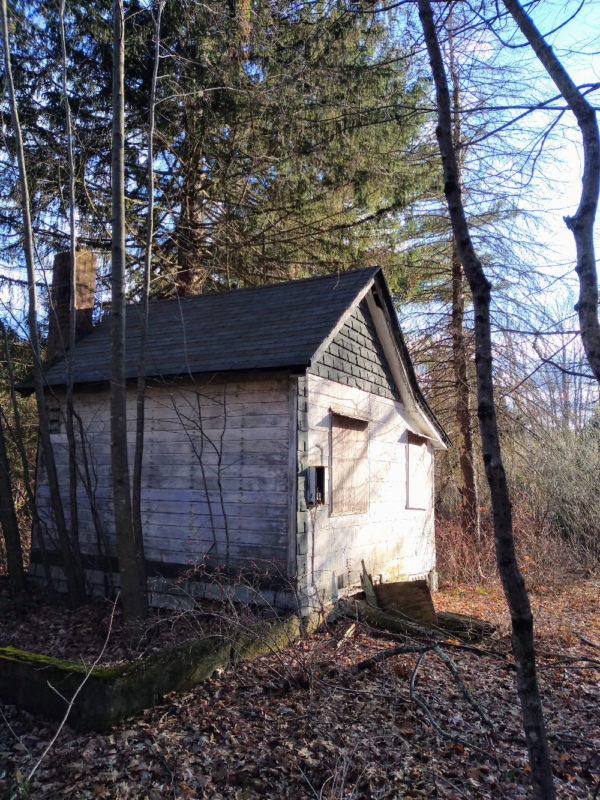
It might have gone another way. Ashford obtained the 73 acre Langhammer property in 1959 after it was taken for unpaid taxes. Around two decades later, the quiet town (current population: 4,244) considered it for a “transfer site,” a euphemism for temporary trash dump. Just a few years after, in 1982, the town played with the notion of selling it off for cordwood and saw timber. The Courant referred to this as “making the forest productive.” This loss to the environment, to public health, and to aesthetic beauty would have gained only $23,000 profit, maximum.
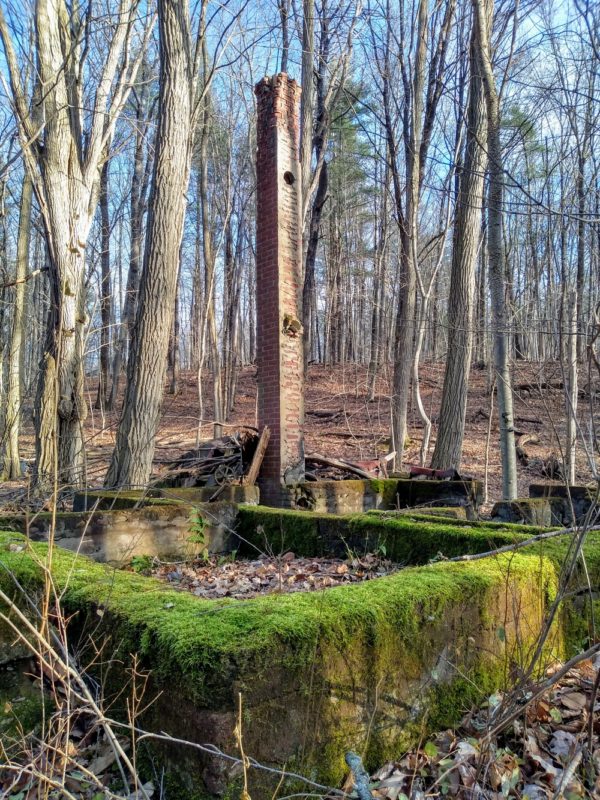
Thankfully, it was left alone, only to experience “improvement thinning” in 1998, just a few years after neighboring Willington dedicated its first nature park, Fenton-Ruby Park and Wildlife Preserve. Though both towns had densely wooded areas, intentionally and legally preserving open space was a different matter. This becomes ever more important with the ongoing sprawl of UConn and the greenfield development we see ruining Ellington and East Windsor.
Drobney Sanctuary was added in 2001. The Langhammer Trail became official in only 2014.
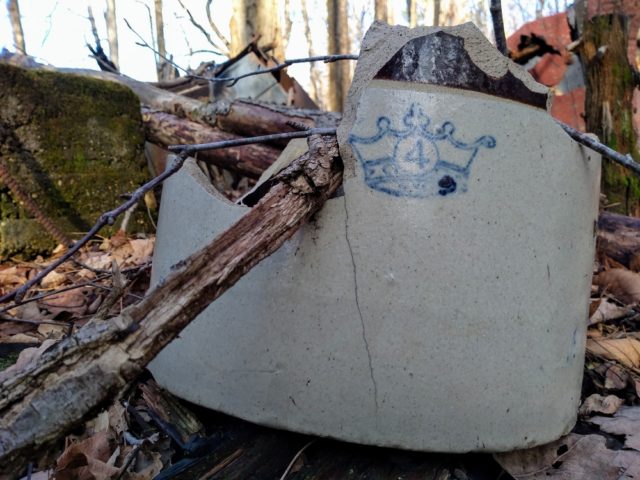
There is no hunting, trapping, or fire-starting permitted at Fenton-Ruby, and it is safe to assume the restriction spans the surrounding areas, where boundaries are not always clear.
In my mind, I always thought the Fenton-Ruby area to be Ashford, and it turns out, I was not crazy for thinking this. The property had belonged to that town until 1727, when residents who wanted to attend a less distant church in Willington, requested it no longer be part of Ashford.
On the tracts that blend together, you will see the remains of homes and hunting camps — some much older than others. There are high stone walls, thought to have been built as sheep enclosures.
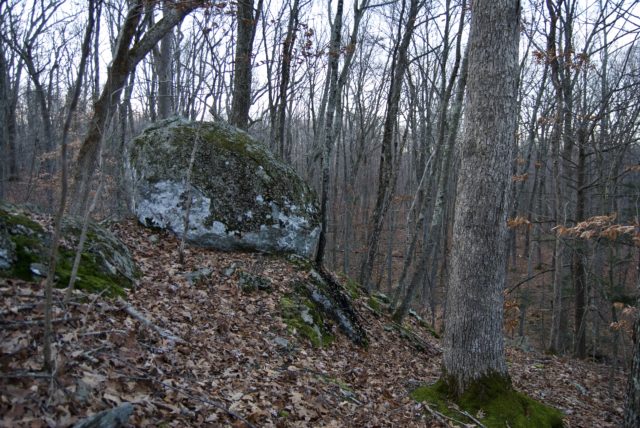
There are no majestic peaks; instead a land that is bisected by a thrust fault. Mini-canyonlands. Iapetos terrane. Expect to see sandy glacial deposits, glacial till, glacial erratics. Garnets. A floodplain. Wetlands. Gully and drumlin hill. There are vernal pools and the episodic Eno Brook, which feeds into the Fenton River, which leads to the Mount Hope, Natchaug, and Willimantic rivers; those go into the Shetucket, into the Thames, and that, to Long Island Sound.
The forest is oak and maple, mostly. Mountain laurel form an impressive maze on the Langhammer Trail.
This land is for deer, wild turkey, and beaver. Bear.
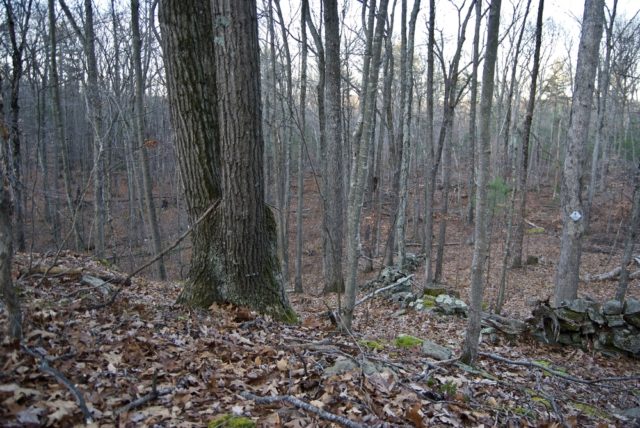
It’s nearly silent. What is a light breeze anywhere else roars like a train engine through the tree tops. The sky, divorced from the influence of highway lights, is deep dark. There are stars, unlike anything that can be viewed in the Connecticut River valley. While fairy houses don’t stoke my imagination, the silence and darkness do.
In 2009, Peter Marteka called Fenton-Ruby a “fairyland place where the peacefulness of the natural world is always available.” It’s exactly that, plus, something of a fairy land.
